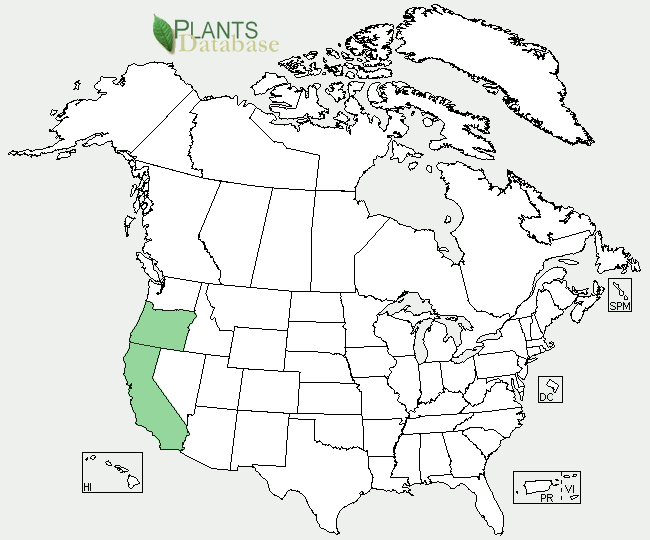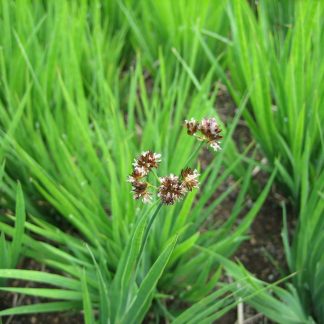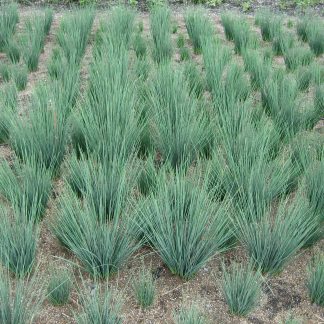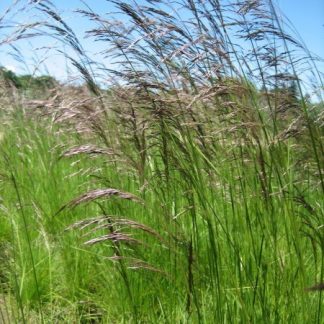Elymus glaucus
blue wildrye
Habit: Elymus glaucus is an upright tufted perennial grass, usually forming small clumps of grayish blue foliage. It grows up to 3 feet tall and has loose, narrow leaves, less than a half inch wide. The surface of the blades is rough and usually flat; however, inrolled margins are also common. Leaves grow along the stems and form a claw-like junction where it veers away from the stalk (auricles). Early summer, two narrow inflorescence spikelets emerge directly from each node. Spikelets are 2 to 6 inches long and bear two wheat-colored florets, which turn golden brown later in the season.
Ecology: Blue wildrye grows in open evergreen or deciduous forests, rocky slopes and clearings. In prairies, it sometimes dominate the area, forming large homogeneous colonies and a quite sightly landscape. It is widespread across Western and Central North America, being most common at low to mid elevations.
Growing conditions: it prefers sun to partial shade and moist to rather dry spots. It can tolerate a variety of soils, including serpentine and sodic soils. This grass attracts bees, butterflies and other beneficial insects, and it is easy to care for. Blue wildrye is an excellent grass for stream bank restoration, meadow and swale seeding. It will look very attractive in the residential landscape as well, either as an accent or a filling plant.
Elymus glaucus is one of the tallest grasses in the west and it is an important source of food to both livestock and wild animals. It resembles the rye species Secale cereales, hence its common name wildrye, and the bluish color of the blades accounts for both the common and scientific (glaucus) names of the species.
Specs
Perennial grass
1-5 feet (30 to 152 cm)
1-2 feet (30 to 61 cm)
6-10






